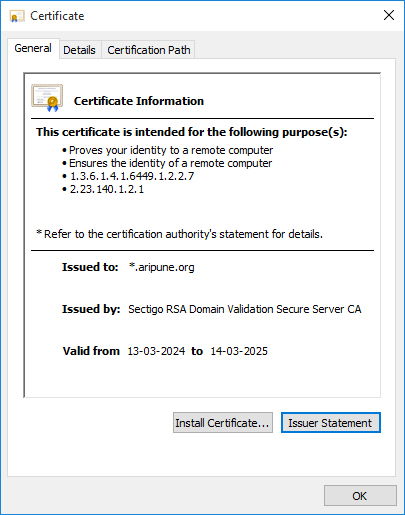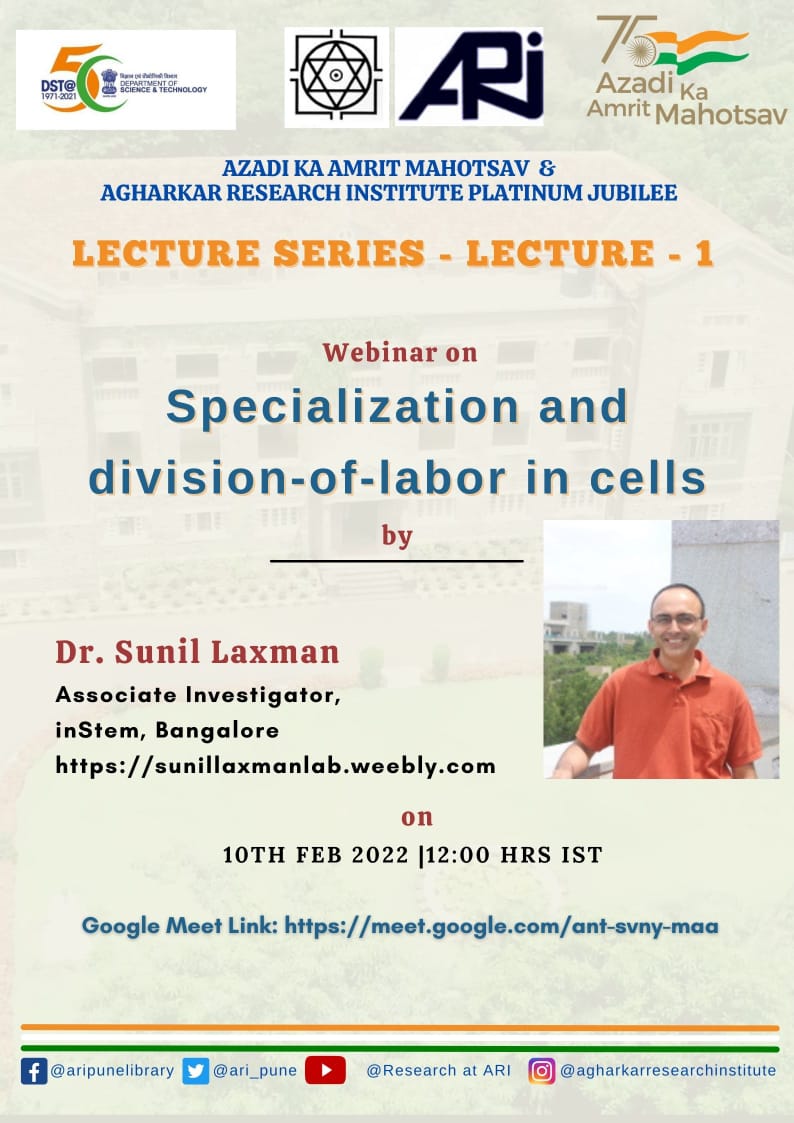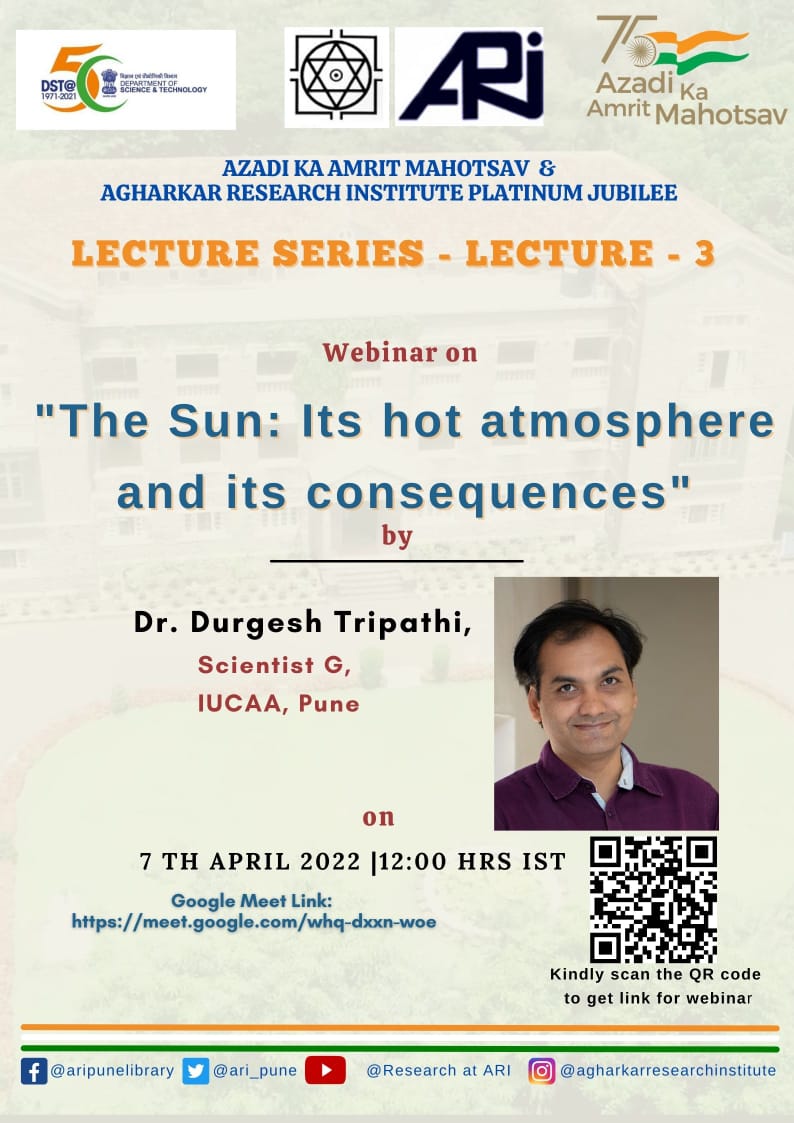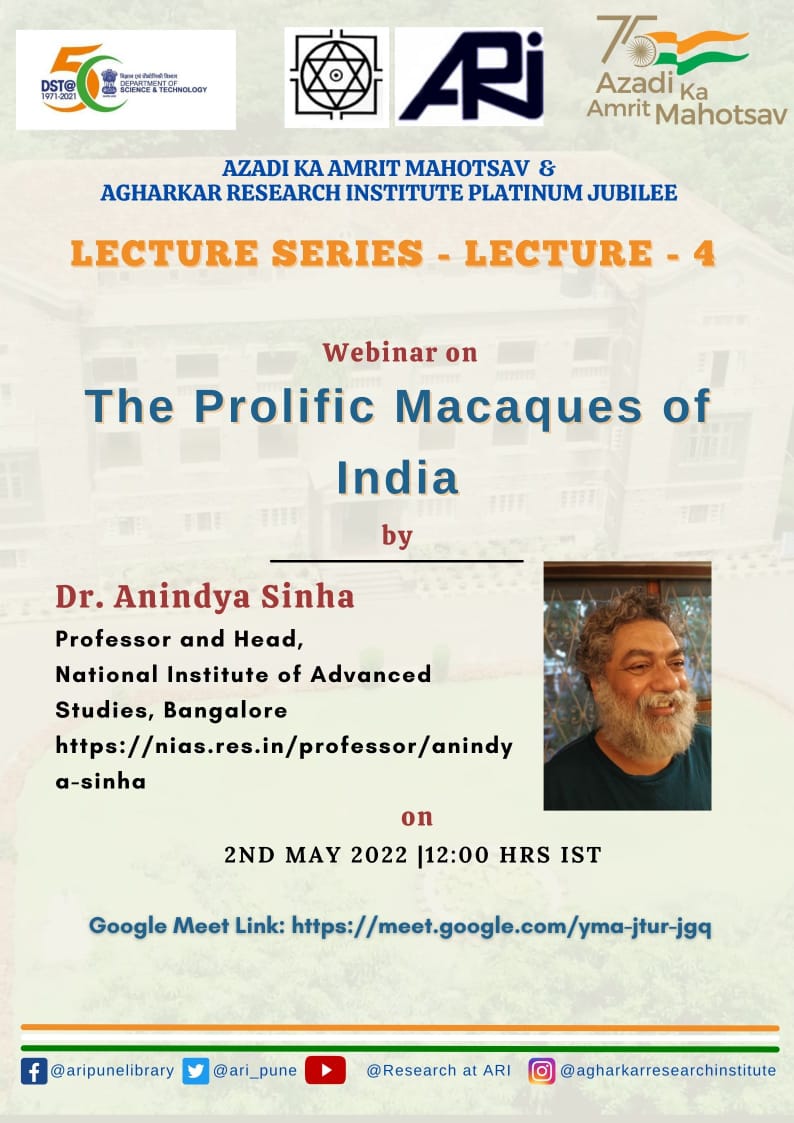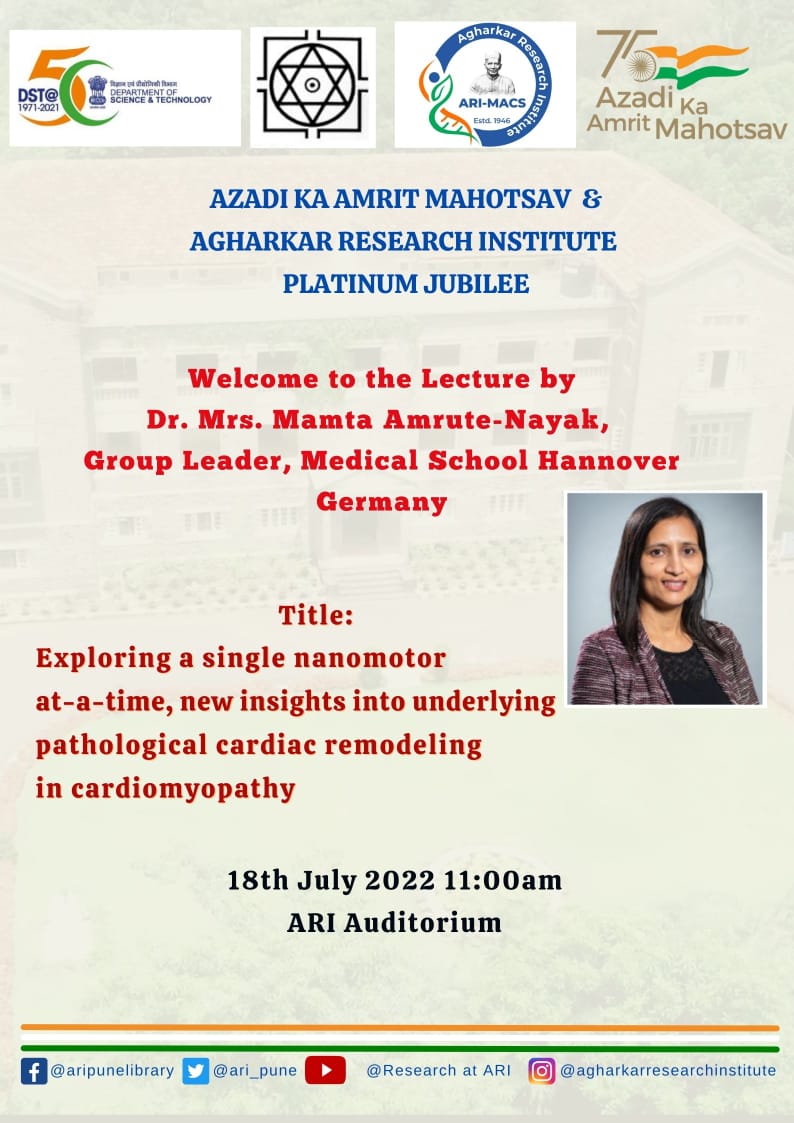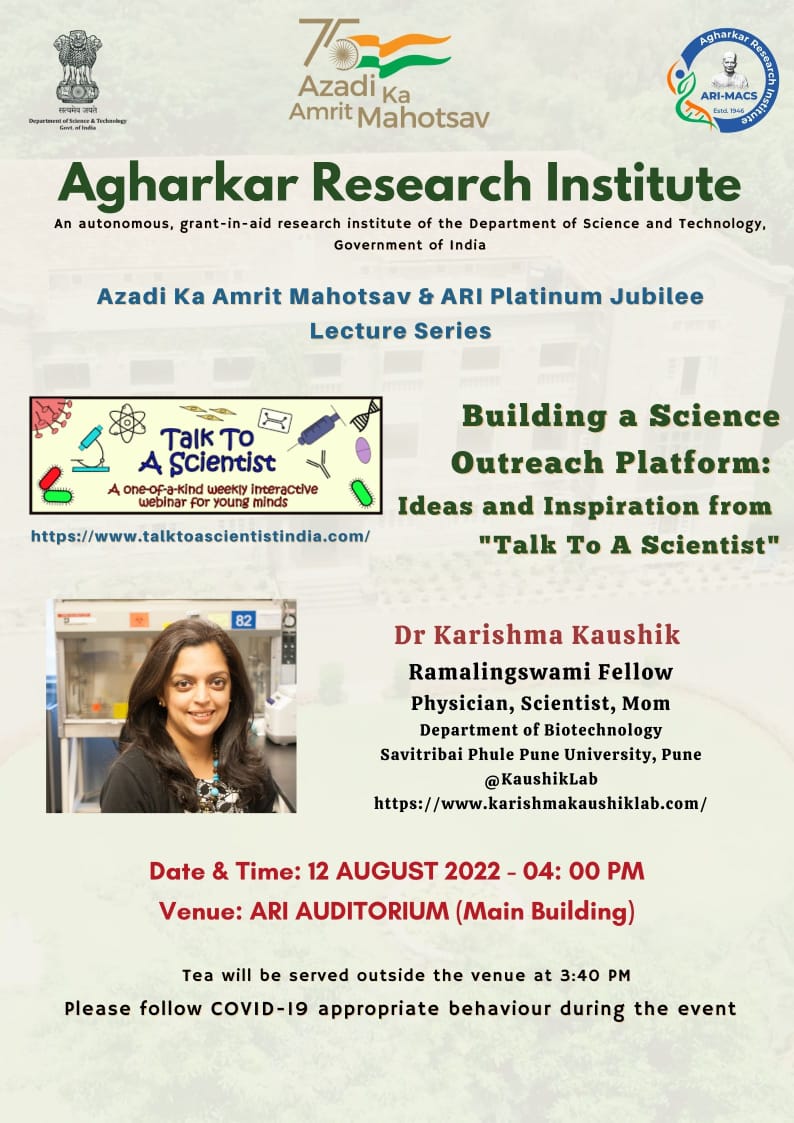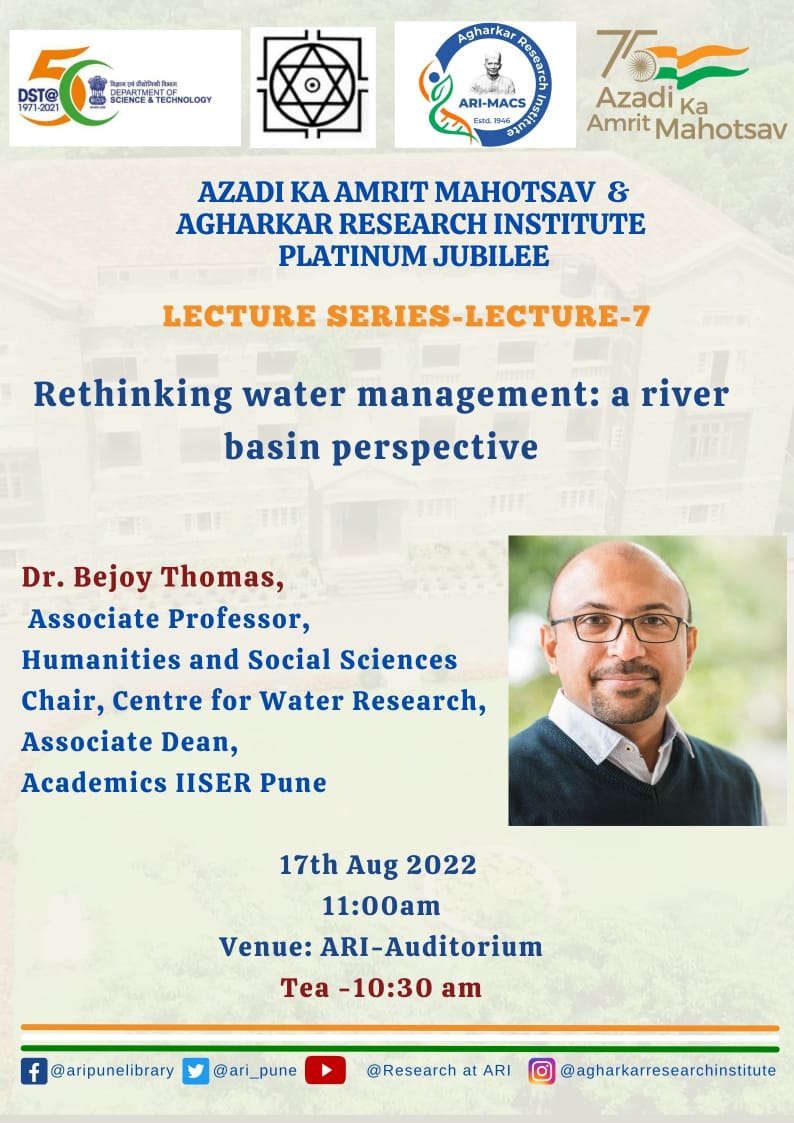
Google Scholar / Social Media
Name : Dr. Monali Rahalkar
Designation : Scientist – E
Brief Background :
I completed my PhD from University of Konstanz, Germany, where I studied methane oxidizing bacteria from Lake Constance. During my postdoctoral work, at University of Bremen, I worked on nitrogen fixing bacteria associated with rice roots.
I started my work in this institute in September 2013, and my main focus isto study, isolate and cultivate novel and environmentally important micro-organisms.My team is currently focused on ‘methanotrophs’ or methane oxidizing bacteria, present in various environments. Methanotrophs oxidize methane and perform the important function of methane oxidation in the environment. They use C1 compounds as their sole source of C and energy. These act as natural bio-filters of methane and are instrumental in methane mitigation.
I started working on methanotrophs from Indian (tropical) rice fields which are one of the key hotspots of methanotrophs. We have been successful in cultivation of various methanotrophs which also involves several new taxa. The methanotrophs would be explored for a variety of bioenergy and biotechnological applications. We are also exploring the genomics of various novel species. We also use various approaches like metagenomics to study the in-situ communities.
Contact Details :
0091-020-25325119
- B.Sc Microbiology (Ist class, 2nd rank in Pune University, Microbiology) 1997
-
M.Sc Microbiology (Ist class with distinction, 6th rank in Pune UniversityMicrobiology) 1999
-
PhD Microbial Ecology 2007 University of Konstanz, Konstanz, Germany (Research guide: Prof. Bernhard Schink).
Methanotrophs (methane oxidizing bacteria): Diversity, cultivation and genomics
- Climate change is currently one of the most of important threats to the living world. Methane is the second most important greenhouse gas and has a higher global warming capacity than CO2. Methane is naturally oxidized by methanotrophs which use methane as the sole source of carbon and energy.
- My current research work is focused on methanotrophs. We are studying various aspects such as their diversity in various habitats, cultivation of methanotrophs, description of cultures and investigating their applications in various fields of bioenergy and biotechnology.
- We are the first laboratory in India to host more than 50 pure strains of methanotrophic bacteria. The isolates belong to nine different genera, of which two novel genera have been described from India by us (Methylocucumis and Methylolobus). We believe that this is the first culture collection of methanotrophic bacteria in India. All of the methanotrophic isolates are being explored for diverse bioenergy, biotechnological and environmental applications including methane mitigation from various sources, gas to liquid biofuel production, single cell protein production, etc.
Methanotrophs in Methane Mitigation
- We are planning to use methanotrophs as novel bio-inoculants for methane mitigation in rice fields and landfills. Further, we would also use bio-stimulation for stimulating the native methanotroph populations which would help in green house has reduction from this source.
- Our further focus would be study of methanotrophs from landfills and stimulating methanotrophs from the existing landfills and design of methanotrophicbiocovers.
Methanotrophs for Biotechnological applications
We are trying to addvalue to the methane from waste natural gas or biogas, i.e. methane valorization, to products such as biodiesel and single cell proteins, are being explored. In India, as methanotrophs were not been cultivated in routine practices, probably, such applications have not been explored.
- Monali C. Rahalkar, Kumal Khatri, Pranitha S. Pandit, Jyoti A. Mohite, Rahul A. BahulikarBook Chapter Anaerobic Oxidation of Methane: A Brief Overview of anaerobic methanotrophyIn: Anaerobes and Anaerobic Processes (published 9th June 2020) Editors: D.R. Ranade and Om Prakash Pages- 169-179
- Rahalkar, M. C., Khatri, K., Mohite, J., Pandit, P. & Bahulikar, R. (2020) A novel Type I methanotroph Methylolobus aquaticus nov. sp. nov. isolated from a tropical wetland. Antonie Van Leeuwenhoek 113: 959-971 (2020).
- Rahalkar, M. C., Khatri, K., Pandit, P. S. & Dhakephalkar, P. K. (2019) A putative novel Methylobacter member (KRF1) from the globally important Methylobacter clade 2: cultivation and salient draft genome features. Antonie Van Leeuwenhoek 112, 1399-1408
- Khatri, K., Mohite, J. A., Pandit, P. S., Bahulikar, R. A. & Rahalkar, M. C. (2019) Description of ‘ Methylobacter oryzae’ KRF1, a novel species from the environmentally important Methylobacter clade 2. Antonie Van Leeuwenhoek 113, 729-735
- Pandit, PS, Hoppert M & Rahalkar MC (2018) Description of ‘Candidatus Methylocucumis oryzae, a novel Type I methanotroph with large cells and pale pink colour, isolated from an Indian rice field. Antonie Van Leeuwenhoek 111, 12: 2473-2484
- Pandit, PS. and Rahalkar MC (2018) Renaming of ‘Candidatus Methylocucumis oryzae’ as Methylocucumis oryzae nov., sp. nov., a novel Type I methanotroph isolated from India. Antonie Van Leeuwenhoek 112(6):955-959
- Rahalkar MC, Patil S, Dhakephalkar PK &Bahulikar RA (2018) Cultivated methanotrophs associated with rhizospheres of traditional rice landraces from Western India belong to Methylocaldum and Methylocystis. 3 Biotech 8:2815
- Rahalkar MC & Bahulikar R (2018) Hemerythrins are widespread and conserved for methanotrophic guilds. Gene Reports 11: 250-254
- Rahalkar MC & Pandit PS (2018) Genome-based insights into a putative novel Methylomonas species (strain Kb3), isolated from an Indian rice field. Gene Reports 13: 9-13
- Pandit PS, Ranade DR, Dhakephalkar PK & Rahalkar MC (2016) A pmoA-based study reveals dominance of yet uncultured Type I methanotrophs in rhizospheres of an organically fertilized rice field in India. 3 Biotech 6: 135.
- Pandit PS, Rahalkar M, Dhakephalkar P, Ranade DR, Pore S, Arora P & Kapse N (2016) Deciphering community structure of methanotrophs dwelling in rice rhizospheres of an Indian rice field using cultivation and cultivation independent approaches. Microbial Ecology 71: 634-644. (Equal first authorship)
- Rahalkar MC, Pandit PS, Dhakephalkar PK, Pore S, Arora P & Kapse N (2016) Genome characteristics of a novel Type I methanotroph ‘Sn10-6’ isolated from a flooded Indian rice field. Microbial Ecology 71: 519-523.
- Rahalkar MC, Pore S, Arora P, Pandit P, Kapse N, Bahulikar R, Schink B & Dhakephalkar PK (2015) Draft genome of Elstera litoralis, a freshwater epilithic biofilm associated bacterium from littoral zone of Lake Constance. Marine Genomics 24: 223-224
- Schink B & Rahalkar MC (2016) Genus Methylosoma Rahalkar, Bussmann and Schink 2007, 1078VP. Bergey’s Manual of Systematics of Archaea and Bacteria,(Whitman W, ed.) pp. John Wliey and Sons, U.S.A
- 15.Sessitsch A, Hardoim P, Döring J, Weilharter A, Krause A, Woyke T, Mitter B, Hauberg-Lotte L, Friedrich F, Rahalkar M, Hurek T, Sarkar A, Bodrossy L, van Overbeek L, Brar D, van Elsas JD and Reinhold-Hurek B Functional characteristics of an endophyte community colonizing rice roots as revealed by metagenomic analysis (2011) Molecular Plant- Microbe Interactions 25 28-36
- Rahalkar M, Bahulikar R, Deutzmann J, Kroth P and Schink B. Elsteralitoralis gen. nov., sp. nov.isolated from stone biofilms of Lake Constance after enrichment with diatom exudates. International Journal of Systematic and Evolutionary Microbiology 2012, 62, 1750-54 First two authors contributed equally.
- Rahalkar M, Deutzmann J, Schink B, and Bussmann I.Abundance and activity of methanotrophic bacteria in littoral and profundal sediments of Lake Constance (2009) Applied and Environmental Microbiology 75 119-126
- Bruckner C, Bahulikar R, Rahalkar M, Schink B, and Kroth P. Bacteria associated with benthic diatoms from Lake Constance: phylogeny and influences on diatom growth and secretion of extracellular polymeric substances (2008) Applied and Environmental Microbiology 74 7740-49
- RahalkarMonali C and Schink Bernhard Comparison of the methanotrophic communities in littoral and profundal sediment of Lake Constance by molecular methods (2007) Applied and Environmental Microbiology, 73 4389-94
- Methylosoma difficile gen. nov., sp. nov., a novel methanotroph enriched by gradient cultivation from littoral sediment of Lake Constance (2007) Rahalkar M, Bussmann I and Schink B International Journal of Systematic and Evolutionary Microbiology, 57 1073-1080
- Bussmann I, Rahalkar M and Schink B Cultivation of methanotrophic bacteria in opposing gradients of methane and oxygen (2005) FEMS Microbiology Ecology 56 331-344.
- ‘Watve M, Shejval V, Sonawane C, Rahalkar M, Matapurkar A, Shouche Y, Patole M, Phadnis N, Champhenkar N, Damle K, Karandikar S, Kshirsagar V and Jog M. K’ selected oligophilic bacteria: A key to uncultured diversity? (2000) Current Science 78 1535-1542
Paper on COVID-19:
- Rahalkar, Monali C. &Bahulikar, Rahul A. 2020. Lethal Pneumonia Cases in Mojiang Miners (2012) and the Mineshaft Could Provide Important Clues to the Origin of SARS-CoV-2. Frontiers in Public Health, 8, 638 DOI: 10.3389/fpubh.2020.581569












